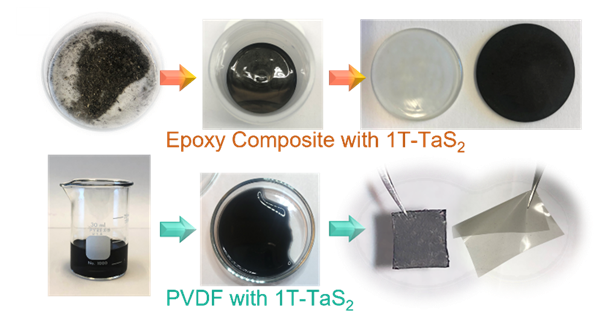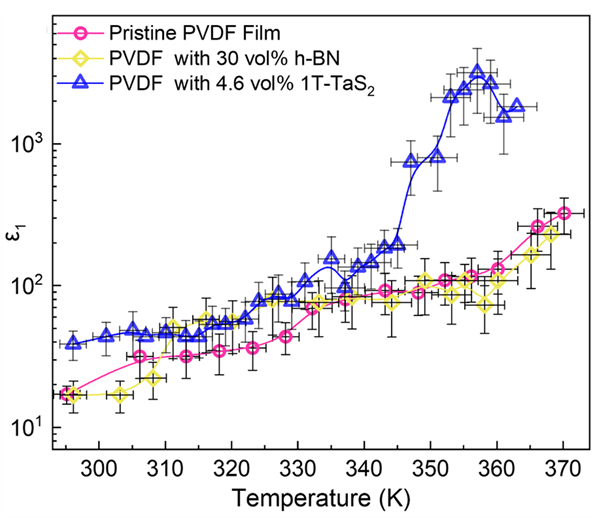Methods Of Synthesis Of Quantum Composites And Applications For Energy Storage And Reflective Coatings
Brief Description
An optimized polymer composite material that offer higher dielectric constant and refractive index at essentially room temperature that makes it invaluable for energy storage devices and/or as a functionalized coating to trigger invisibility of the substrate.
Full Description
Background
Polymer composites are a combination of polymers, e.g., thermosets or thermoplastics, with various reinforcements and fillers added to the base polymers to improve their performance in a specific application. The composite preparation methods are invasive and typically result in damage to the fillers. Functional composites usually require a strong base material - filler coupling, e.g., polymer - graphene coupling is needed to increase the overall thermal conductivity. Significant efforts are expended to finding innovative fillers, e.g., metallic or ferroelectric, to increase the dielectric constant of the composites.
Technology
Prof. Alex Balandin and his team have synthesized a novel polymer composite with fillers comprised of van der Waals materials including transition metal dichalcogenide (TMD) and transition metal trichalcogenide (TMT) families that reveal strongly correlated charge density wave (CDW) quantum properties. The unique functionality of these quantum composites are defined by the strongly correlated quantum phenomenon in the fillers. Their unique functionality is based on the phase transition that happens at a temperature of ~360 K (room temperature is 300K) making the fillers more metallic leading to a strong increase in the dielectric function of the composites.

Summary of the composite preparation steps

Graph of the dielectric constant, ε1, measured by the parallel capacitance method as a function of temperature for a PVD composite with 1T-TaS2 fillers on a logarithmic scale (y-axis).
Advantages
The uniqueness and significant benefits of these polymer composites are:
- The quantum composites have increased DC dielectric constant in practically relevant temperature range, above room temperature.
- Preserves the macroscopic CDW quantum states in the dilute composites after material processing steps.
- The composites are optimized to have a strong phase transition while remaining electrically insulating.
- At lower temperatures, the composite layer transmits or reflects back the incident light similar to other material systems. Increasing the temperature above ~350 K, increases the refractive index of the composite resulting in total internal reflection of the incident light in the composite layer making the configuration invisible at specific wavelengths.
Suggested uses
Potential applications of this technology, include:
- Use as a dielectric in capacitors where when the temperature is raised to 360 K, the dielectric constant increases strongly thereby increasing the stored energy by one or two orders of magnitude.
- Use as a coating on a transparent or opaque substrate where when the temperature is raised to ~350 K, the configuration becomes invisible.
Patent Status
Patent Pending
Inventor Information
Please review all inventions by Prof. Balandin and his team at UCR.
Please read recent press for this invention.
Please visit Prof. Balandin's group website to learn more about their research at UCR.
Related Materials
Contact
- Venkata S. Krishnamurty
- venkata.krishnamurty@ucr.edu
- tel: View Phone Number.
Other Information
Keywords
quantum composite, capacitor, energy storage, dielectric constant, refractive index, optical coating
